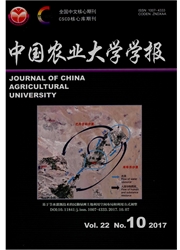

 中文摘要:
中文摘要:
为给兽药的环境安全评价提供依据,采用直接吸收法(密闭法)测定了阿维菌素、安普霉素和磺胺二甲基嘧啶对不同类型土壤中微生物呼吸活动的影响,并进行了安全评价。结果表明:从暴露的中期开始,在有机质含量丰富的砂壤土中添加药物后,土壤CO2的平均释放量比对照增加,表明药物对微生物呼吸有促进作用;在有机质较少的壤土中,3种药物在暴露的前期和中期对土壤微生物呼吸有抑制作用,并随含量的增加而增大;高含量的阿维菌素、安普霉素、磺胺二甲基嘧啶组(500mg/kg)染毒后51h之内,土壤中CO2的平均释放量比对照组分别减少了43%、62%和46%,说明3种药物对有机质较少的壤土中微生物的呼吸表现出明显的抑制作用。参考农药的安全性评价标准,结合药物在环境中的实际含量,可以得出结论:阿维菌素、安普霉素、磺胺二甲基嘧啶3种兽药对土壤环境中的微生物具有一定的毒性作用。
 英文摘要:
英文摘要:
The effects of different concentrations of Avermectin, Apramysin and Sulfamethazine on microbe respiration in different soils were studied. And the safety assessment of three kinds of veterinary medicines was conducted. The results showed that these effects varied with soils. It was noticed that to higher soil organic matter corresponded negligible effects of drugs on soil respiration. In the sand loamy soil with higher organic matter, avermectin, apramysin and sulfamethazine could all stimulate soil respiration during early and middle period of exposure. The COz emissions increased following the exposure of three drugs at different concentrations. The activity of microbe respiration in loamy soil with low organic matter was inhibited after 51 hours exposure to the three veterinary drugs. Compared with the control group, the COz emissions were reduced of 43%, 62% and 46% respectively following the exposure of avermactin, apramysin and sulfamethazine at the highest concentration group (500mg/kg dw). This may be related to the interaction between drugs and microbial activity in the soil. According to the standard of pesticide safety evaluation, the three drugs used contained were less poisonous to soil microbes.
 同期刊论文项目
同期刊论文项目
 同项目期刊论文
同项目期刊论文
 期刊信息
期刊信息
